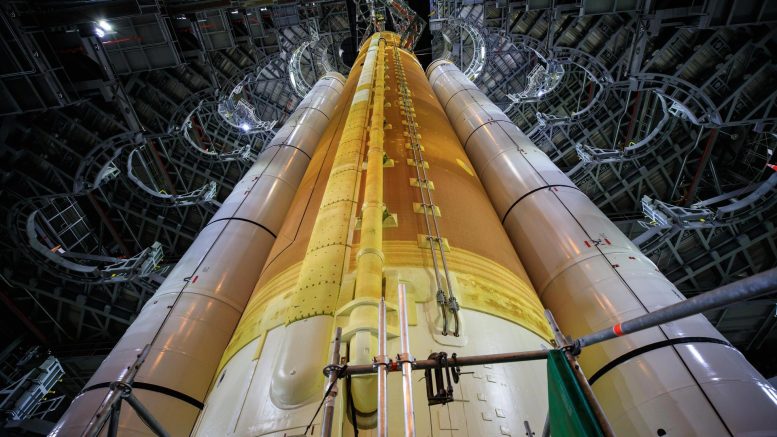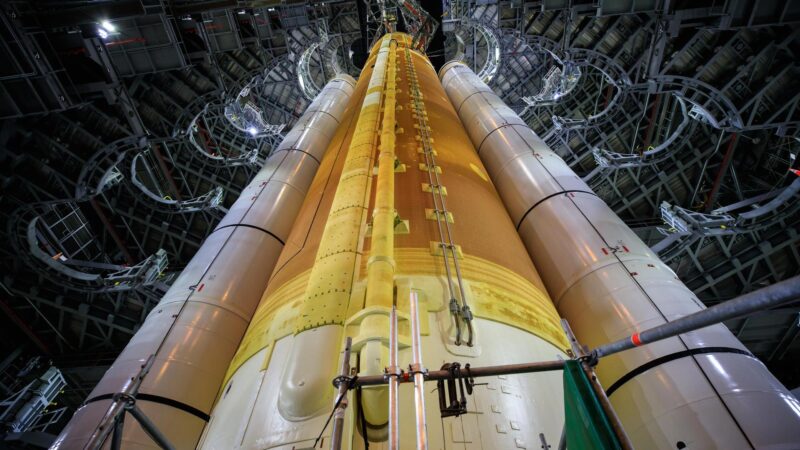
Une vue rapprochée de la fusée Artemis I Space Launch System à l’intérieur de High Bay 3 du Vehicle Assembly Building au Kennedy Space Center de la NASA en Floride le 20 septembre 2021. Crédit : NASA/Frank Michaux
Le site Artemis I La fusée lunaire se rapproche de la sortie du bâtiment d’assemblage des véhicules (VAB) à ;” data-gt-translate-attributes=”[{” attribute=””>NASA’s Kennedy Space Center in Florida for the first time.
The first two of 20 platforms surrounding the Space Launch System (SLS) and Orion spacecraft that allow work on the integrated system inside the building were retracted for roll out to Launch Complex 39B. Teams retracted the platforms, which move like hydraulic kitchen drawers, near the launch abort system on the Orion spacecraft in anticipation of the roll.

Teams retracted the first two of 20 platforms surrounding the Space Launch System rocket and Orion spacecraft that allow work on the integrated system in High Bay 3 inside the Vehicle Assembly Building at NASA’s Kennedy Space Center in Florida. The first platforms to be retracted – which move like hydraulic kitchen drawers when moved – are those located near the launch abort system on Orion in preparation for rollout to Launch Complex 39B for the Artemis I wet dress rehearsal. Credits: NASA/Kim Shiflett
Teams are continuing to install instrumentation on the SLS’s twin solid rocket boosters inside the VAB. Thousands of sensors and special instruments will monitor the rocket and spacecraft as they roll out for the first time on March 17 and make the four-mile journey to Launch Complex 39B, arriving on March 18. Engineers will capture as much data as possible on the performance of all the systems that are part of the rocket, spacecraft, ground systems used for rollout, and on the pad for propellant loading and other activities. Once all the rocket and spacecraft systems are inspected, the 322-foot-tall rocket will roll to the launch pad for the wet dress rehearsal test, which is scheduled to occur approximately two weeks after it arrives to 39B.
The last steps remaining before rollout include inspecting each piece of the rocket and spacecraft, including physically entering different components of SLS and, step-by-step, making sure SLS and Orion are ready for the trip to the launch pad. As inspections continue, the Kennedy ground systems team is working to remove equipment and scaffolding away from the rocket and will continue retracting the platforms until the entire rocket is revealed.



